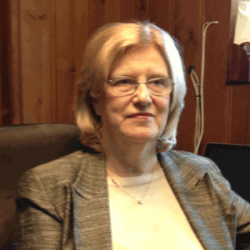Fear of Change and the Field of Changelessness

Right around the time I learned how to meditate, I read a haiku from the sixth century AD:
He creeps along the log in fear and trembling,
He does not know that the bridge is flowing and the water is not.
For some reason, this haiku rang bells for me. Somehow I had always intuited the truth of this haiku in my own life—that what we experience from day to day and year to year in our lives is ever changing and impermanent. However what lies within us and at the basis of the ever-changing universe is non-changing eternity. Fear of falling off the log is based on a false image of what is real and what isn’t.
We try to hold tight to impermanence when all along the permanent safety of the ever-present aspect of life is within us and at the base of all change.
Before learning TM, change and perceived loss scared me. The happier I was, the more I was scared that my happiness and the circumstances that created it were going to end. There was always something to lose.
Everything changes—our bodies, our beliefs, our family, our emotions, our surroundings, our desires. Everyone leaves, we graduate school, jobs end, romances conclude, children grow up and move out. People die. Sometime after we get what we desire, we start to lose fascination with it. We want to move on.
The one thing that never changes transcends all the relative change we experience in life. That field of existence upon which everything exists and from which everything manifests is the ultimate reality.
Maharishi, the founder of the Transcendental Meditation program, once taught a world-famous philosopher to meditate. The man was an existentialist. He said to Maharishi that nothing in life means anything because “Everything is always changing.” Maharishi pointed out, “It is the element of always…” that reveals the eternal nature of existence.
When Maharishi instructed the philosopher in the TM technique the next day, the man immediately started to transcend—he experienced finer and finer states of thought until his mind came to rest in the silent basis of experience, the state of pure unchanging existence. And then he began to laugh, and he laughed, and laughed. Such sweet relief!
Another poem that speaks to me in this way was written closer in time but is as eternal in truth as the haiku; it is a poem by William Wordsworth from 1842 in which he writes:
The most alluring clouds that mount the sky
Owe to a troubled element their forms,
Their hues to sunset. If with raptured eye
We watch their splendour, shall we covet storms,
And wish the Lord of day his slow decline
Would hasten, that such pomp may float on high?
Behold, already they forget to shine,
Dissolve—and leave, to him who gazed, a sigh.
Not loth to thank each moment for its boon
Of pure delight, come whencesoe’er it may,
Peace let us seek,—to stedfast things attune
Calm expectations—leaving to the gay
And volatile their love of transient bowers,
The house that cannot pass away be ours.
Wordsworth was inspired to say that we may, and even must, enjoy the transient beauties of the world, much like bonuses that come our way and reward us, but that we should attune ourselves to the house “that cannot pass away.” This is the same message that the great masters of reality such as Maharishi come to share with us—that we must simply and innocently allow our conscious attention to turn within from the field of change to experience ourselves as our cosmic eternal never-changing Self. That is the reality upon which we can then enjoy boons “of pure delight.”
Fortunately for me, a friend came along to visit me after she learned Transcendental Meditation and insisted I look into it. And I found what you will find when you learn—that what the poets and Maharishi and other sages of our world have said is the truth can be found by each and every one of us, within each and every one of us.
About the Author
Janet Hoffman is the executive director of TM for Women Professionals, a division of TM for Women in the USA





